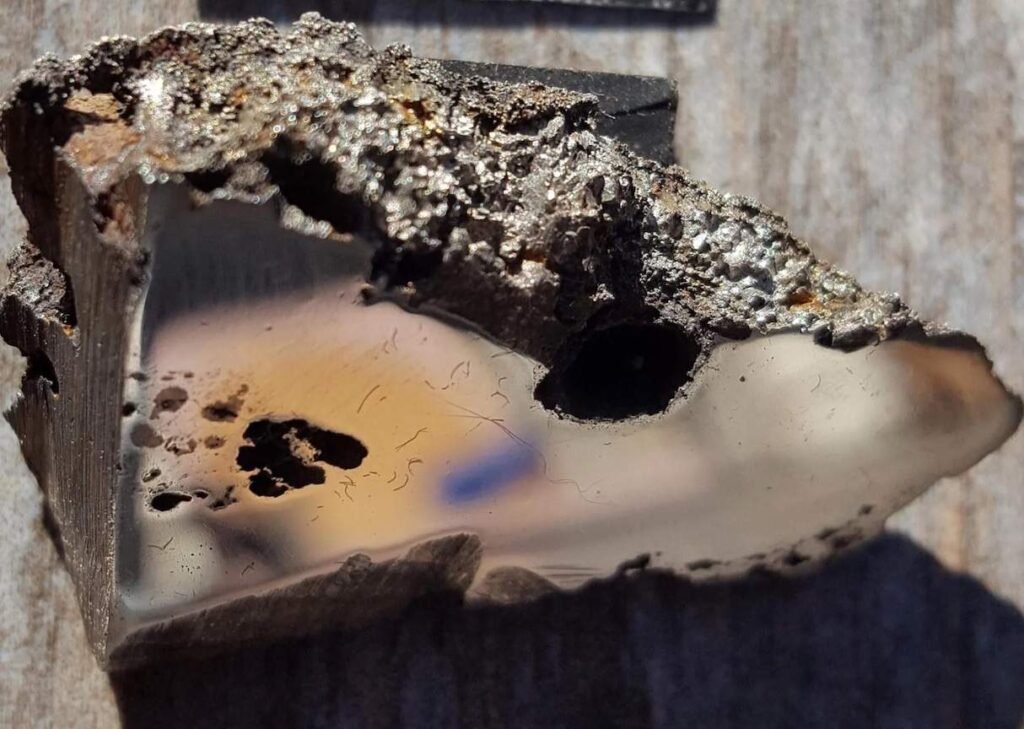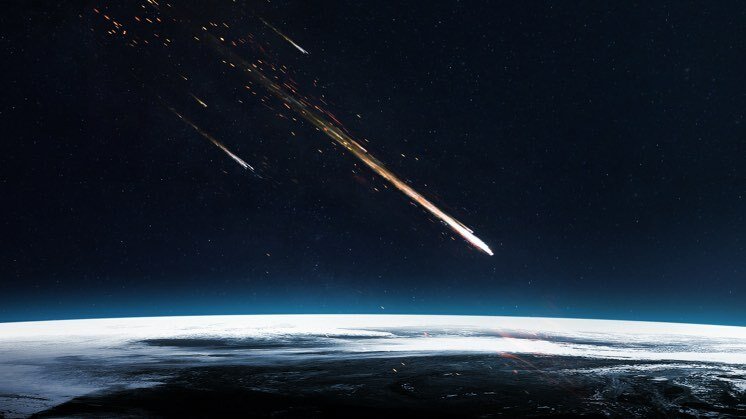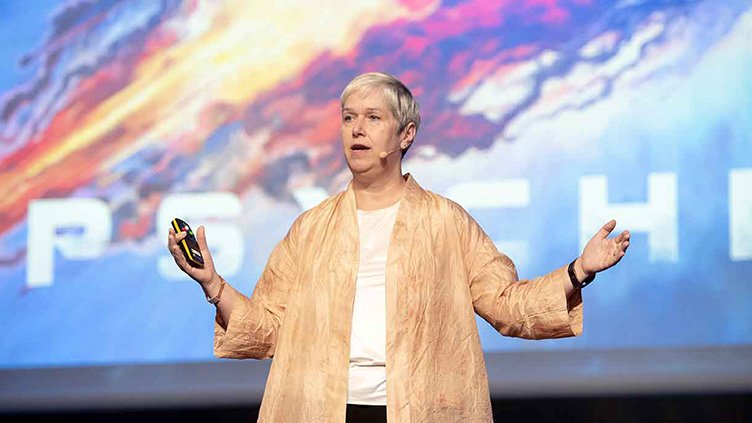A 15.2 metric ton meteorite contains two minerals that have never before been observed on Earth, according to scientists (33,510 pounds).
According to a news release from the University of Alberta, the materials come from a 70-gram (almost 2.5-ounce) chunk of the meteorite, which was found in Somalia in 2020 and is the ninth-largest meteorite ever found.
Data from SARAO’s MeerKAT radio telescope (green) is superimposed on optical and near-infrared data from the Dark Energy Survey to reveal the strange radio circles.
Samples of the space rock were sent to Chris Herd, curator of the university’s meteorite collection, for classification. As he was looking at it, he noticed something strange: some of the sample’s components weren’t visible under a microscope. Then, because Andrew Locock, director of the university’s electron microscope laboratory, has experience describing new minerals, he turned to him for help.
According to Herd, a professor in the university’s department of Earth and atmospheric sciences, “he said you’ve got at least two new minerals in there” on the very first day he performed some analyses. “That was incredible. To declare the existence of a new mineral typically requires much more investigation.
Elaliite is a mineral that takes its name from the space object known as the “El Ali” meteorite, which was discovered close to the town of El Ali in central Somalia.
After Lindy Elkins-Tanton, vice president of Arizona State University’s Interplanetary Initiative, Herd gave the second one the name elkinstantonite. Elkins-Tanton is the primary investigator of NASA’s forthcoming Psyche mission, which will go to a metal-rich asteroid that is orbiting the sun between Mars and Jupiter. He is also a regents professor in that university’s School of Earth and Space Exploration.
Herd stated, “Lindy has done a great deal of work on how the cores of planets form, how these iron nickel cores form, and the closest analog we have are iron meteorites. “It felt fitting to honor her contributions to science by naming a mineral after her.”
Following the discovery of a leak that caused the spacewalk to be postponed on December 14th, the Soyuz MS-22 crew ship is surveyed by the European robotic arm piloted by Cosmonaut Anna Kikina.
Oliver Tschauner, a mineralogist and professor of research in the department of geology at the University of Nevada, Las Vegas, said that the International Mineralogical Association’s recognition of the two new minerals in November of this year “indicates that the work is strong.”
Every time a new mineral is discovered, Herd explained, it indicates that the rock’s chemistry and actual geological conditions were different from those of previously discovered minerals. This particular meteorite has two officially described new minerals, which is what makes it exciting.
Lab-created minerals’ function in discovery Role:
According to a press statement from the University of Alberta, Locock was able to quickly identify the newly discovered minerals since comparable minerals had previously been synthesized, and he was able to match the composition of the newly discovered minerals with their artificial equivalents.
Alan Rubin, a meteorite researcher, former adjunct professor, and research geochemist in the department of earth, planetary, and space sciences at the University of California, Los Angeles, said: “Material scientists do this all the time.” They can make new compounds for a variety of reasons, such as to explore what is physically feasible for research purposes or because they are looking for a substance with specific attributes for a practical or commercial application, such as conductivity, high strain, or high melting temperature.
It is just by chance that a scientist will discover a mineral in a meteorite or a terrestrial rock that has never been observed before, and very frequently, the same compound will have already been invented by material scientists.
Both of the new minerals are iron phosphates, according to Tschauner. A phosphate is a phosphoric acid salt or ester.

He said through email that phosphides, which are a rare primary component of iron meteorites, are converted into phosphites, which are secondary products in iron meteorites. The two novel phosphates thus provide information about the oxidation processes that took place in the meteorite sample.
As far as I’m aware, many of these meteorite phosphates developed in space, however it’s unclear if the oxidation took place there or on Earth following the fall. In either scenario, water is most likely the reactant responsible for the oxidation.
The results were announced at the University of Alberta’s Space Exploration Symposium in November. As explained by Rubin, the discoveries “broaden our perspective on the natural materials that can be found and can be created in the solar system.”
According to Herd, the El Ali meteorite from which the materials were extracted looks to have been sent to China in search of a buyer.
In the meantime, scientists continue to examine the minerals, as well as perhaps a third, to learn more about the meteorite’s formation environment. And recently found minerals might have fascinating long-term effects, he continued.
Material scientists are always intrigued by newly discovered materials because of their possible use in a variety of societal contexts, according to Herd.





